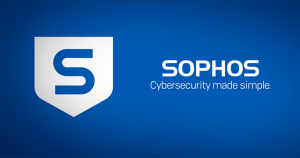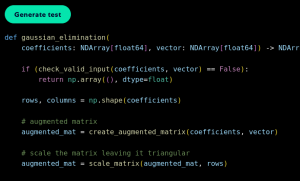How Star Citizen catapulted from a $500k Kickstarter into a $40 million project
![]() He lives for his childhood dream. For Chris Roberts, the creative mind behind Wing Commander, the global success of that game an important event in his life. The President and CCO at Cloud Imperium Games Corporation climbed the gaming industry ladder in 1986 with Origin where he first developed the RPG Times of Lore. He landed his biggest success, however, in 1990 with the first Wing Commander, whose franchise was to surpass even the Ultima series.
He lives for his childhood dream. For Chris Roberts, the creative mind behind Wing Commander, the global success of that game an important event in his life. The President and CCO at Cloud Imperium Games Corporation climbed the gaming industry ladder in 1986 with Origin where he first developed the RPG Times of Lore. He landed his biggest success, however, in 1990 with the first Wing Commander, whose franchise was to surpass even the Ultima series.
In 1996 he left Origin, which was acquired by Electronic Arts four years earlier, and founded his first own studio Digital Anvil. There appeared Starlancer and Freelancer, both space games in the spirit of Wing Commander. Microsoft later took over Digital Anvil and Roberts also left this studio and got involved in films such as Lord of War with Nicholas Cage in 2011.
The birth of Star Citizen
But, Roberts always wanted to make a very ambitious game. With new technological possibilities, the game development itself has changed. The fact that Internet today runs just about anything online (from cloud CPUs/GPUs and storage) brings studios, publishers, and communities much closer together. And on the business side, technologies and operations are opening up that weren’t possible five years ago.
So, he started make something like “Star Citizen Project” without a partner like EA, Microsoft or Activision–the project would depended heavily on the hopes, expectations, and wallets of contributors to take the place of a publisher.
Star Citizen brings the visceral action of piloting interstellar craft through combat and exploration to a new generation of gamers at a level of fidelity never before seen. The 30th century virtual universe space ship game is a complete universe where any number of adventures can take place, allowing players to decide their own game experience.
Roberts decided to take the popular crowdfunding site Kickstarter to raise the money. Star Citizen debuted on Kickstarter in late 2012 seeking just $500,000. When its funding period closed it had raised more than $2m from 34,000 people. This has since swelled to over $40 million as the game’s publicity and popularity expanded–and with that has the promises made by Chris Roberts and his studio.
The ambition was to create something unique
A Kickstarter success depends on what you want to achieve at the end and how close is the startup budget. Roberts realized that Kickstarter is cheap, scalable and there is a private community on the platform keeps the lookout for exciting new projects to support this. So, he didn’t stop there. He started funding the project via the game’s official site. A year or so on and the funding drive has continued via the game’s dedicated website.
The team has received about two-thirds of their budget from their own side, and small part from Kickstarter. So if you have a very ambitious project forward and is willing to spend money on the infrastructure, then one can imagine the thing with its own superior website.
But where will Star Citizen stop? This is the question that might arise when one notes that the title developed by Chris Roberts and the Roberts Space Industries (RSI) team continues to reap millions. Almost a year after the start of the Kickstarter campaign that the launched, the project has raised a little over $40m, a figure that continues to grow. The team believe that the success behind Star Citizen is because there have been so few big space-based games in the last decade or so.
“I’m completely shocked by how much we have raised and how well we have done,” said Mr Roberts. “I would never have guessed it was possible.”
![]()
The game
Initially, Roberts wants the game to be a space simulation highly inspired by Wing Commander or Privateer, and equipped with modern features such as the ability to play cooperatively or solo, in a fleet or in the same unit.
Today, just a list of stretch goals published on the RSI website realize the ambitions have grown as surely as the million–such as supporting the Oculus Rift, exploration of more than a hundred of space systems, 45 missions for the single player campaign (30 initially), orchestral music, movement studio in Austin, dozens of additional vessels, Annex mobile application support and others.
Star Citizen proposes two modes of play–a solo campaign can be done offline, called Squadron 42. But there will also be a multiplayer persistent universe where you can always find an activity for you and members of your squad. One server will include all players. But unlike other MMOs, your character will not level and will depend on your skill and how your ship will make the difference. A tool will be developed that will allow players to create their own vessel or object. The ability to customize the vessel will be very extensive, so that the vessels are not all identical. Among the most common feature requests for Star Citizen are atmospheric combat and ground exploration.
“It’s not one of those games you can make for two, three or even four million,” said Roberts. “Originally, I didn’t think I would be able to do everything I wanted to.”
The first element of the game–the hangar module—is already being released that lets players look around the ship or ships they have bought and in which they will fly in Star Citizen. The next modules called dog-fighting system is schedule to release in 2015.
Shaping the universe
Roberts said that much of the team is busy working on the Dogfighting Module, another in the planned handful of modules that will let players experience the game before the full version releases. The $40 million and growing fund will allocate funding for Cloud Imperium to develop procedural generation technology for future iterations of Star Citizen.
Roberts said advanced procedural generation will be necessary for creating entire planets worth of exploration and development content. A special strike team of procedural generation-oriented developers will be assembled to make this technology a reality.
But that’s not all. At $42 million, Cloud Imperium Games will expand the website area of the Galactapedia with holographic ships and make it so items and the navigation interface appear in 3D. Moreover, Moon Collider, the company behind the ground breaking artificial intelligence (AI) system, Kythera, has announced a partnership with Cloud Imperium Games to guide computer-controlled characters and spacecraft throughout Star Citizen.
More than 394,000 people have backed Star Citizen, which is due to launch sometime in 2015. The game is already the most successful crowdfunded project in history from a dollars perspective, easily surpassing the next closest competitor: the Pebble Watch ($10 million). The RSI team want to build Star Citizen in a way that the experience will be fresh in five years, ten years and into the foreseeable future.
Image credits: Roberts Space Industries, https://robertsspaceindustries.com/
A message from John Furrier, co-founder of SiliconANGLE:
Your vote of support is important to us and it helps us keep the content FREE.
One click below supports our mission to provide free, deep, and relevant content.
Join our community on YouTube
Join the community that includes more than 15,000 #CubeAlumni experts, including Amazon.com CEO Andy Jassy, Dell Technologies founder and CEO Michael Dell, Intel CEO Pat Gelsinger, and many more luminaries and experts.
THANK YOU









